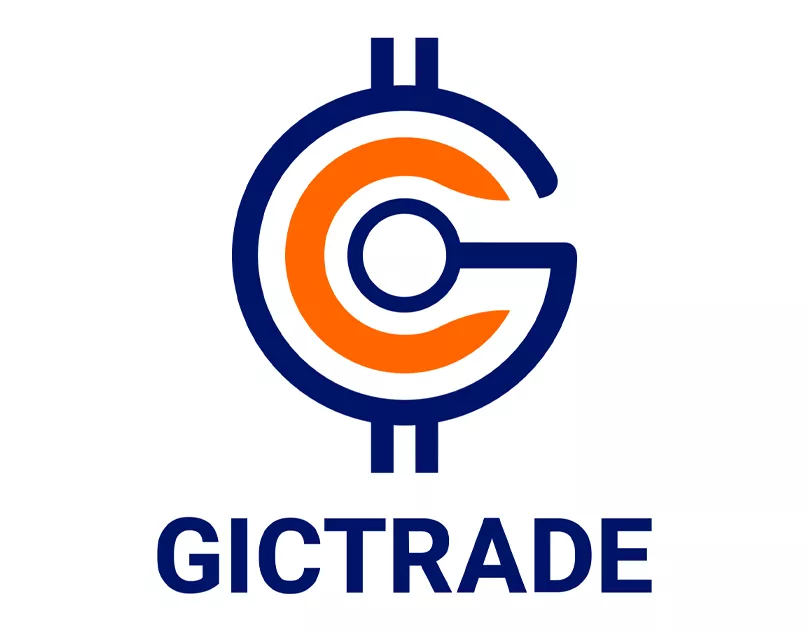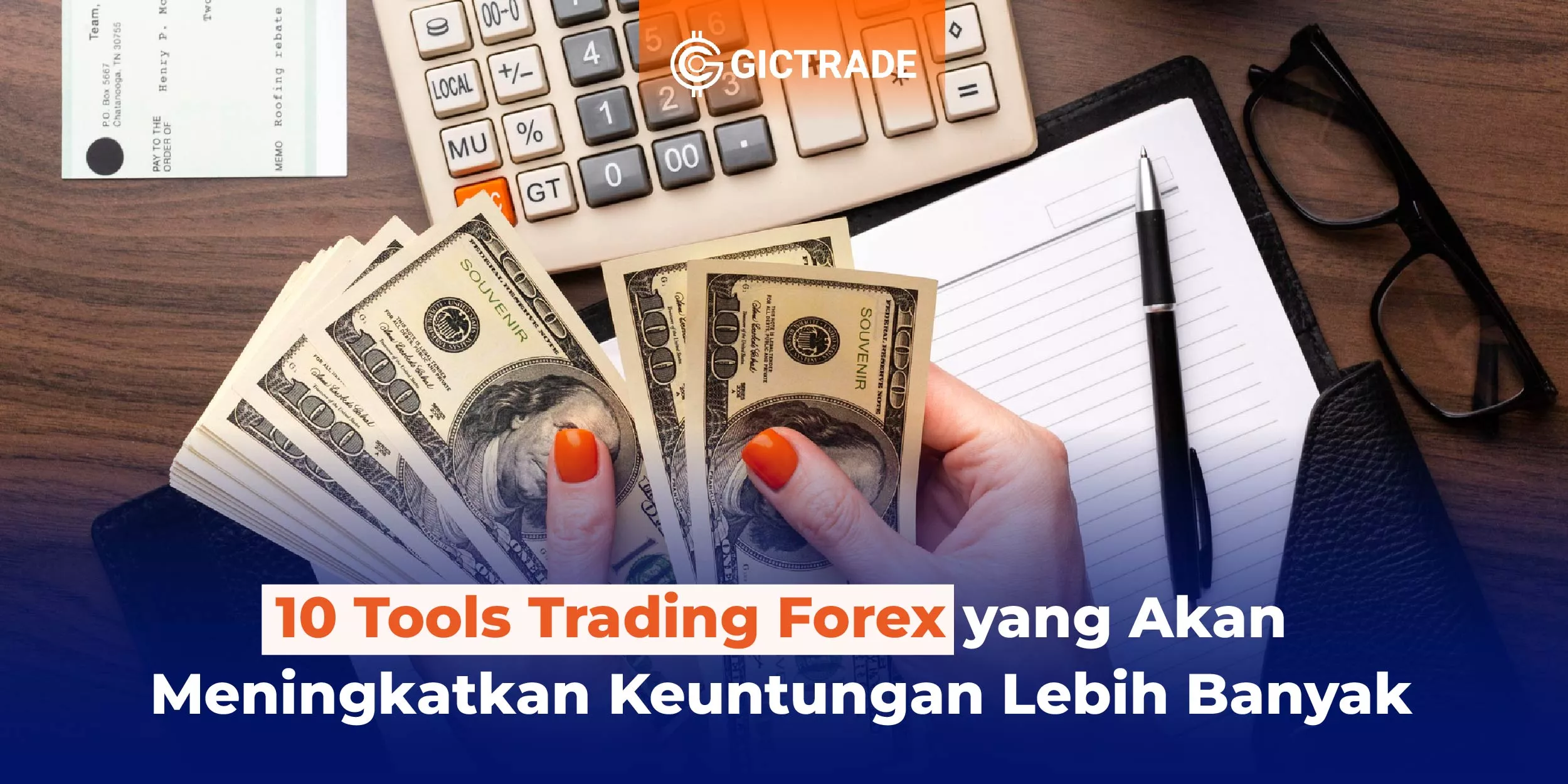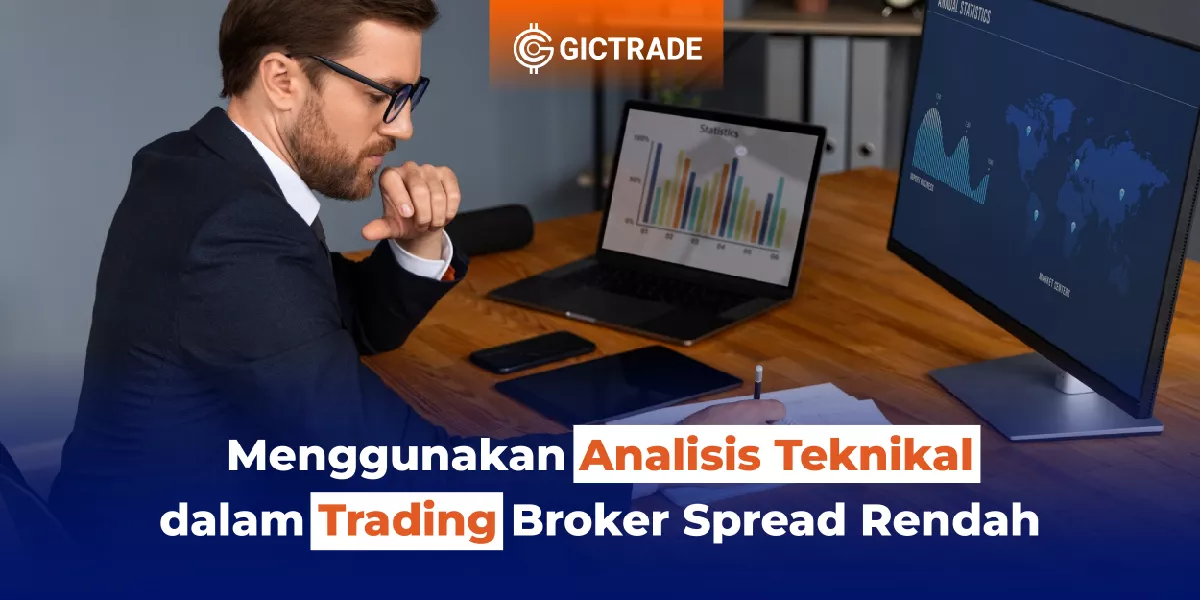Tools Trading Forex - Forex trading is one of the most popular forms of investment around the world. When trading forex, it is important to use the right tools to help increase profits and reduce risks. In this article, we will explain ten forex trading tools that can help you increase your profits. From technical analysis tools to automated trading platforms, we will explore the various tools that forex traders can use.
.webp)
Table of Contents
1. Introduction to Forex Trading Tools
Before we discuss forex trading tools that can increase profits, it is important to understand the basics of forex trading. Forex is short for Foreign Exchange, which refers to the exchange of foreign currencies. Forex trading involves buying and selling currencies with the aim of profiting from differences in exchange rates.
2. Technical Analysis Tools
2.1 Price Chart
Price charts are an important tool in forex trading tools. They show the price movements of currencies over a period of time. By analyzing price charts, traders can identify patterns and trends that can provide buy or sell signals.
2.2 Technical Indicators
Technical indicators are analytical tools that help traders understand the price movements of an asset and identify trading opportunities. These indicators work by analyzing historical price and trading volume data to look for certain patterns and trends that can provide clues about the direction of future price movements.
Why Are Technical Indicators Important in Forex Trading Tools?
The importance of technical indicators in trading cannot be overstated. With the financial markets being so volatile, traders need to be able to make the right decisions in a short period of time. Technical indicators help traders to:
- Identifying market trends: Technical indicators can help traders identify market trends, whether they are bullish or bearish. By understanding these trends, traders can make smarter trading decisions.
- Finding optimal entry and exit points: Technical indicators help traders find good entry points to open a buy or sell position. It also helps identify ideal exit points to take profits or limit losses.
- Confirming trading signals: When traders receive trading signals from other analysis tools, technical indicators can be used to confirm the strength and validity of those signals before taking action.
- Managing risk: By understanding price movements and market trends, traders can better manage their risks and avoid unnecessary losses.
Types of Technical Indicators in Forex Trading Tools
There are different types of technical indicators available to traders. Some commonly used indicators include:
1. Moving Averages
Moving average is one of the most basic and popular technical indicators. It calculates the average price over a certain period of time and forms a line that moves over time. Moving averages help identify trends and can be used as entry or exit points.
2. Relative Strength Index (RSI)
RSI is an oscillator indicator that helps identify whether an asset is overbought or oversold. The RSI ranges from 0 to 100 and is typically considered overbought if the value is above 70 and oversold if the value is below 30.
3. Band Bollinger (Bollinger Bands)
Bollinger Bands is a volatility indicator that measures price movements relative to a moving average. Bollinger Bands consist of three lines - a center line (moving average) and two bands that move parallel to the center line. This indicator helps to identify trending or ranging market conditions.
4. MACD (Moving Average Convergence Divergence)
MACD is a trend indicator that combines two exponential moving averages with different time periods. It helps identify the trend direction and strength of the ongoing trend.
How to Use Technical Indicators Effectively
Now that we understand what technical indicators are in trading and their types, it's time to learn how to use them effectively:
1. Understand Each Indicator Well
Before you start using them, make sure to understand each indicator well. Know the strengths and weaknesses of each indicator so you can use them wisely.
2. Combine Multiple Indicators
It is better to use several technical indicators together than to rely on a single indicator. Combine different indicators to get richer confirmation and information about market conditions.
3. Use Indicators according to Market Context
Remember that not all indicators are suitable for every market condition. Always adjust the indicators you use to the current market conditions.
4. Use Indicators for Confirmation
Don't rely on just one indicator to make trading decisions. Use indicators to confirm signals from other analysis tools.
5. Practice with a Demo Account
Before you apply technical indicators in real trading, practice with a demo account first. This will help you understand how the indicators work without the risk of losing money.
2.3 Oscillator
Oscillator are technical indicators that help traders identify overbought or oversold conditions. These indicators provide potential price reversal signals and can be used to make trading decisions.
Why are Oscillators Important in Forex Trading Tools?
Oscillator is an important tool in trading because it helps traders identify market momentum that may not be visible on a regular price chart. This can help them avoid high-risk trades or tell them when to take a profitable position. With a good understanding of oscillators, traders can increase their chances of success in what is often a volatile and challenging market.
Getting to Know Popular Oscillator Types
In the world of stock trading and forex trading tools, there are various types of oscillators used by traders to analyze the market. Each oscillator has different characteristics and uses. Let's get to know some of these popular oscillators better:
1. Moving Average Convergence Divergence (MACD)
MACD is one of the most widely used oscillator indicators in technical analysis. This indicator shows the difference between two different Moving Averages (MA), namely the fast MA (often referred to as the MACD line) and the slow MA (the signal line).
When the MACD line crosses the signal line from bottom to top, it indicates a buy signal (bullish), while if it crosses from top to bottom, it indicates a sell signal (bearish). In addition, MACD can also be used to identify divergence, which is when the price movement does not match the MACD movement, which can indicate a possible trend change.
2. Relative Strength Index (RSI)
RSI is a momentum indicator that helps measure the speed and change of prices. The RSI ranges from 0 to 100. If the RSI is above 70, it indicates that the market is overbought, and prices may be due for a downward correction.
Conversely, if the RSI is below 30, it indicates an oversold market, and prices are likely to correct upwards. The RSI is also used to identify divergence and convergence conditions that can provide potential clues about trend changes.
3. Stochastic Oscillator
Stochastic Oscillator is an indicator that helps traders identify overbought and oversold conditions. It moves between 0 and 100 and calculates the current price position relative to the price range over a given time period. If the stochastic is above 80, it indicates that the market is overbought, while if it is below 20, it indicates that the market is oversold. When the stochastic lines cross each other, it can signal a trend reversal.
4. Bollinger Bands
Bollinger Bands is a volatility indicator consisting of three lines, namely the upper band, middle band (usually a moving average), and lower band. The upper band is calculated based on the average price movement in a certain period plus several standard deviations, while the lower band is calculated by subtracting several standard deviations from the average price movement.
When the price approaches the upper band, it indicates an overbought condition, and when the price approaches the lower band, it indicates an oversold condition. Bollinger Bands help traders identify the level of market volatility and potential trend reversals.
5. Ichimoku Cloud
Ichimoku Cloud is an indicator that originated in Japan and consists of five different lines. Two of them, Senkou Span A and Senkou Span B, form a shaded area known as the "cloud." If the price is above the cloud, it indicates an uptrend (bullish), while if the price is below the cloud, it indicates a downtrend (bearish). The Ichimoku Cloud also provides buy and sell signals based on the intersection of other lines, such as the Tenkan Sen and Kijun Sen.
2.4 News Trading
News trading involves analyzing the impact of economic and political news on the forex market. These news stories can affect currency price movements, and traders can use news analysis tools to make informed trading decisions.
3. Platform Trading
3.1 MetaTrader
MetaTrader is a popular forex trading platform and is widely used by traders. It offers a variety of features including interactive charts, technical analysis tools, and fast order execution.
3.2 NinjaTrader
NinjaTrader is a professional trading platform that is often used by experienced traders. It offers advanced analytical tools, custom coding capabilities, and integration with various brokers.
3.3 cTrader
cTrader is an innovative and easy-to-use trading platform. It offers direct access to the interbank market, advanced charting, and fast order execution.
Recommended Articles :
|
List of Fraudulent Forex Brokers in Indonesia According to Regulators |
|
Complete Chart Patterns: Continuation, Reversal, to Bilateral |
Meet GIC, the Most Trusted Forex Broker Platform in Indonesia!

Not familiar with GIC? Let's get acquainted. Unlike other conventional brokerage firms, GIC through the GICTrade platform provides a solution for traders who do not want to be burdened with high trading costs. GICTrade is a peer-to-peer trading platform that brings together traders and market makers.
So, what's so special about GICTrade? As a platform that brings together trader and market maker, you as a prospective customer can certainly choose between the two, namely becoming a trader or a market maker.
GICTrade's role as a transaction venue provider can minimize costs and help maximize profits for traders and market makers as well as create a fair transaction atmosphere and results.
Traders will benefit from no commission fees and swap fees and low spreads due to the presence of market makers as liquidity providers. You can also join the trader community on Telegram GICtrade to ask fellow traders directly about their trading experiences.
Also follow GIC Instagram to get webinar information and various attractive prizes. In addition, on GIC YouTube, traders can also learn trading for free! What are you waiting for? More complete features that fully support you to start investing and trading forex through GIC. Make transactions simpler, safer, and more profitable.
4. Forex Trading Robots
Forex trading robots, also known as Expert Advisors (EAs), are computer programs that can trade automatically. They can identify trading opportunities based on predetermined parameters and execute trades automatically without the trader's intervention.
Why are Trading Robots Popular in Forex?
Trading robots have become a popular choice among forex traders for some very compelling reasons. Here are some of the key benefits that make them popular:
- Efficiency: Trading robots can execute trades automatically and quickly, eliminating human delays and emotional errors.
- 24/5 Trading: EA can work non-stop for 24 hours a day, five days a week, monitoring the market continuously without getting tired.
- Fact-Based Decision Making: EA is based on objective algorithms and historical data, avoiding the influence of emotions in trading decision making.
- Backtesting Capability: Most trading robots allow you to test strategies on historical data before implementing them in real-time.
- Multitasking: EA can manage multiple trading accounts and trade multiple currency pairs simultaneously.
Mastering Trading Robots for Forex
Using trading robots effectively requires a deep understanding of how they work and how to optimize your trading strategy. Here are the steps you need to take to master trading robots in forex:
1. Understand the EA Algorithm and Logic
Before you start using a trading robot, understand the algorithm and logic used by the EA. This will help you recognize trading opportunities identified by the robot and ensure the strategy used is in line with your goals.
2. Test Robot on Demo Account
Before you implement a trading robot on a real account, test the strategy on a demo account first. This will allow you to see how the EA performs under real market conditions without the risk of losing money.
3. Optimize Robot Settings
Each trading robot has customizable settings. Try to optimize the EA settings to match your preferences and risk tolerance. Remember that a strategy that was successful in the past does not necessarily produce the same results in the future.
4. Monitor Robot Performance
Monitor the robot's performance regularly and re-evaluate the strategy used. If necessary, make changes to the settings or strategy to ensure the robot continues to perform optimally.
Advantages and Risks of Using Trading Robots
Using trading robots can provide significant benefits, but it also has some risks that you need to consider carefully. Here is a summary of the advantages and risks of using EAs in forex trading:
Profit:
- Fast and Automated Trade Execution
- Able to Work 24/5 Without Fatigue
- Decision Making Based on Data and Facts
- Can Perform Strategy Backtesting
- Multitasking to Manage Multiple Accounts
Risk:
- Depends on the Quality of the Strategy Used
- Future Performance Cannot Be Predicted from the Past
- Over-Reliance on Robots Can Reduce Your Risk Management Skills
5. Trading Signal
Trading signal are suggestions or recommendations to trade a particular currency. These signals are usually given by professional traders or paid signal providers. Traders can follow these signals to help them make the right trading decisions.
6. Economic Calendar
An economic calendar is a tool that lists the schedule of economic news releases and other important indicators. Traders can use the economic calendar to stay abreast of important events that may affect the forex market and make informed trading decisions.
7. Risk Management in Forex Trading Tools
7.1 Stop Loss Order
A stop loss order is an instruction given to a broker to close a trading position if the price reaches a specified loss level. This tool helps protect traders from uncontrolled losses.
7.2 Take Profit Order
Take profit order is an instruction given to the broker to close a trading position if the price reaches a specified profit level. This tool helps traders lock in their profits and avoid losses.
7.3 Trailing Stop Order
Trailing stop order is an instruction given to the broker to automatically adjust the stop loss order as the price moves. This tool allows traders to protect their profits while still leaving room for profitable price movements.
8. Emotional Management
Emotional management is an important aspect of forex trading tools. Traders need to learn to control emotions such as greed and fear, which can affect trading decision making. Emotional management tools such as trading journals and meditation exercises can help traders stay calm and focused.
9. Market Education and Analysis
9.1 Forex Trading Blogs and Forums
Forex trading blogs and forums are valuable resources for traders. Here, traders can read market analysis, trading tips, and other traders' experiences. They can also interact with fellow traders to share knowledge and strategies.
9.2 Forex Educational Materials
Forex educational materials, such as ebooks, video tutorials, and webinars, can help traders improve their understanding of the forex market and trading strategies. Good education is the key to becoming a successful trader.
10. Trading Journal
A trading journal is a tool that is often overlooked by many traders. However, having a detailed trading journal can help traders track and analyze their performance. By recording every trade they make, traders can learn from their mistakes and improve their trading strategies.
Recommended Articles :
|
BCA Credit Card Interest: Types, Calculation Methods, and Fees |
| Complete Guide to Choosing the Most Trusted and Best Forex Broker |
Conclusion
In the world of forex trading, using the right forex trading tools can make a difference in the profits earned. From technical analysis tools to automated trading platforms, there are many tools that can help traders achieve success. However, it is important to master these tools and use them wisely.
Source :
- "Moving Average Convergence Divergence (MACD)" oleh Investopedia, Link: https://www.investopedia.com/terms/m/macd.asp This resource provides a detailed explanation of the MACD indicator, including how to calculate it, interpret its signals, and how to use it in technical analysis.
- "Relative Strength Index (RSI)" oleh TradingVie, Link: https://www.tradingview.com/wiki/Relative_Strength_Index_(RSI) This article provides a complete guide to RSI, including usage, signal interpretation, and trading strategies based on this indicator.
- "Stochastic Oscillator" oleh BabyPips, Link: https://www.babypips.com/learn/forex/stochastic-oscillator BabyPips presents an informative article about the Stochastic Oscillator, discussing how this indicator works and how to use it in trading.
- “Trading Robots in Forex: Introduction and Benefits” by John Doe, Forex Times, 2022,https://www.forextimes.com/robot-trading
- "Optimizing Robot Trading Strategies for Maximum Profits" by Jane Smith, Forex Insight, 2023, https://www.forexinsight.com/optimalkan-robot-trading
- "The Use of Trading Robots in Forex: A Professional Trader's Perspective" by Michael Johnson, Trader's Journal, 2021, https://www.tradersjournal.com/robot-trading-forex
- "Exploring Different Robot Trading Algorithms for Forex" by Lisa Tan, Forex Strategies,2022, https://www.forexstrategies.com/algoritma-robot-trading
- Dianisa, A. (2022). Complete Guide to Using Technical Indicators in Trading. Jurus Cuan. [Online] Available at: https://juruscuankaya.com/panduan-lengkap-menggunakan-indikator-teknis-dalam-trading/
- Gunawan, F. (2020). Trading Strategy Using the Most Effective Technical Indicators. Traders Family. [Online] Available at: https://www.tradersfamily.com/strategi-trading-menggunakan-indikator-teknis-yang-paling-efektif/
- Oktavianus, A. (2019). Understanding Technical Indicators and How to Use Them in Trading. Seputarforex. [Online] Available at: https://www.seputarforex.com/artikel/memahami-indikator-teknis-dan-cara-menggunakannya-dalam-trading-202925.html
 Last:
Last: 






